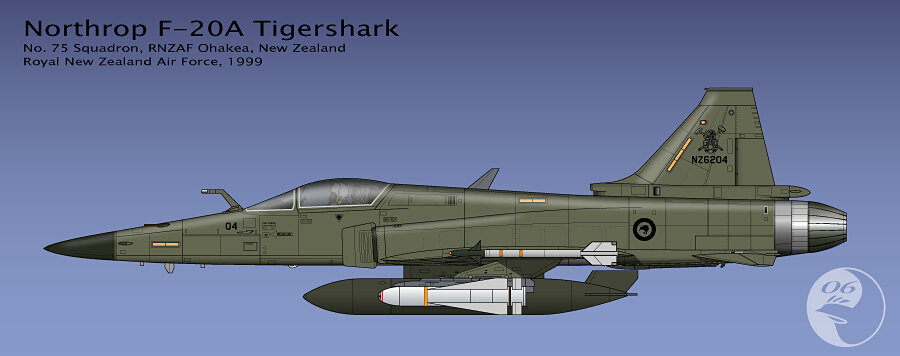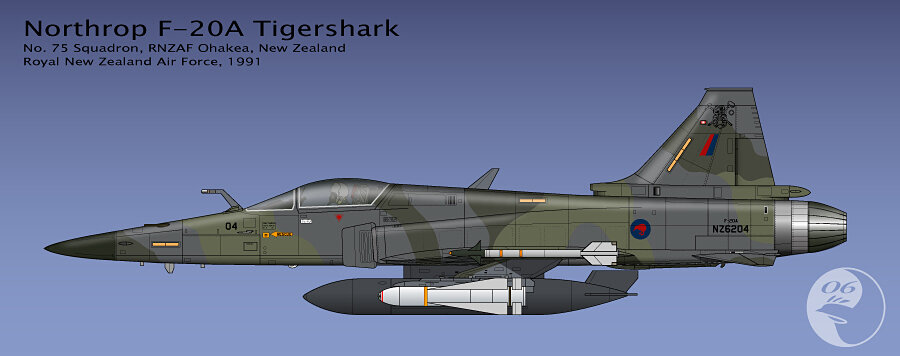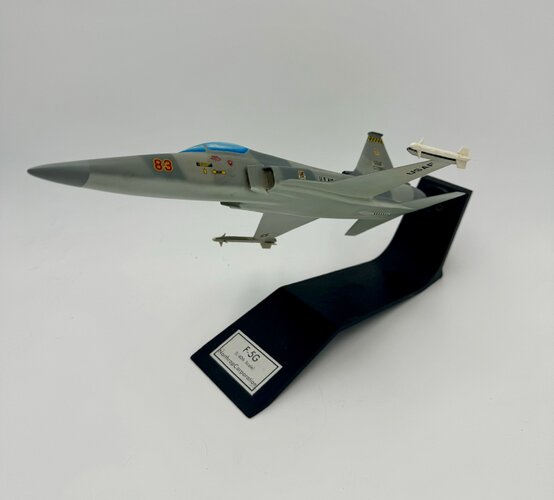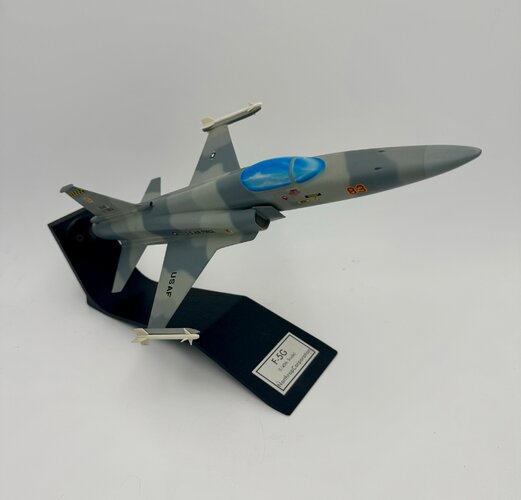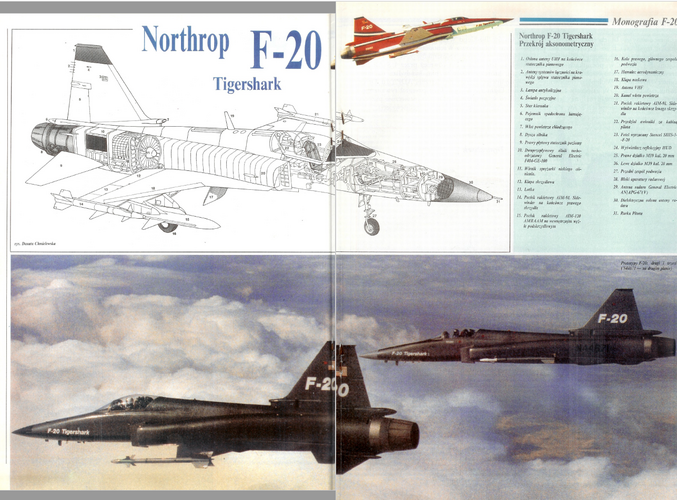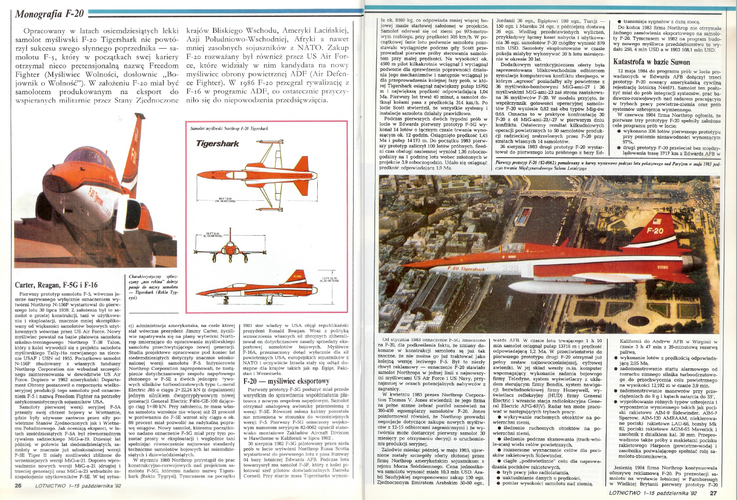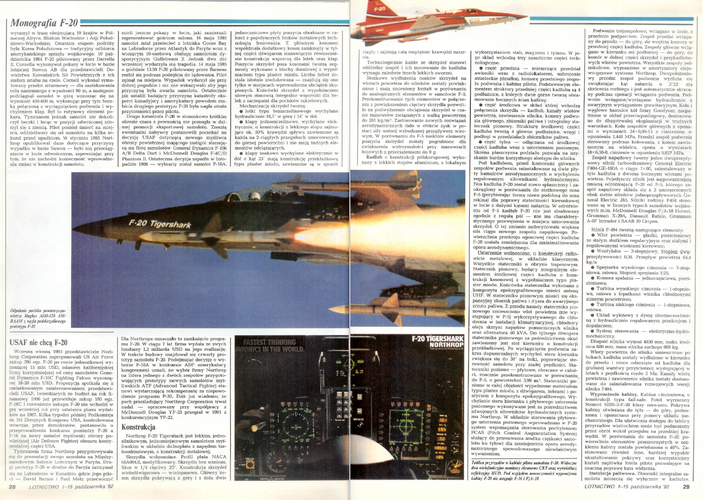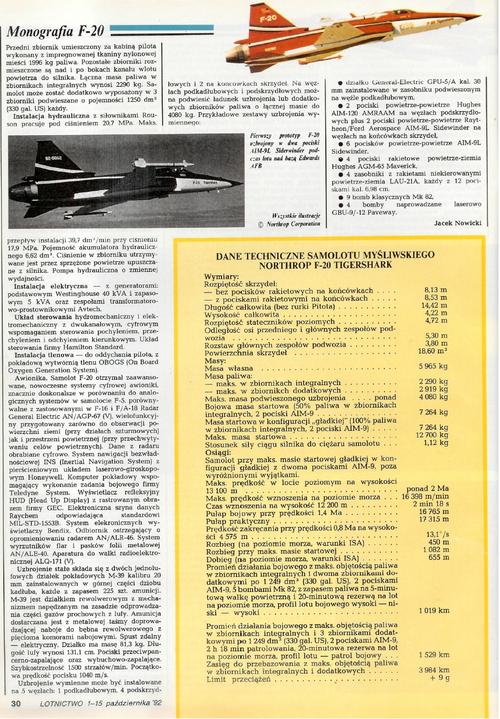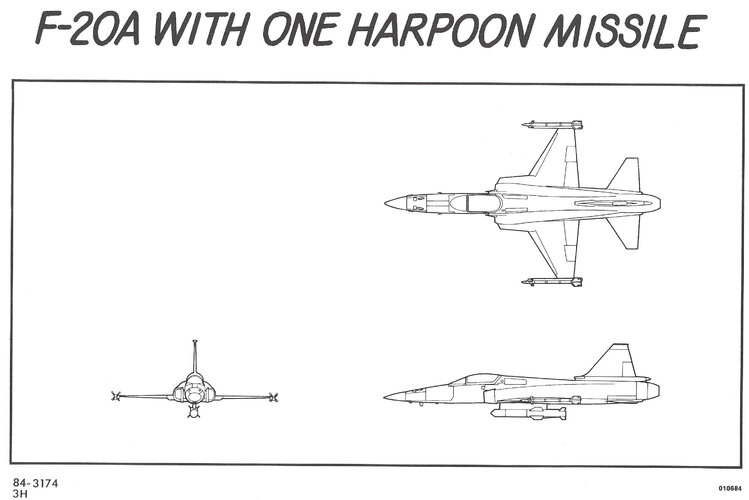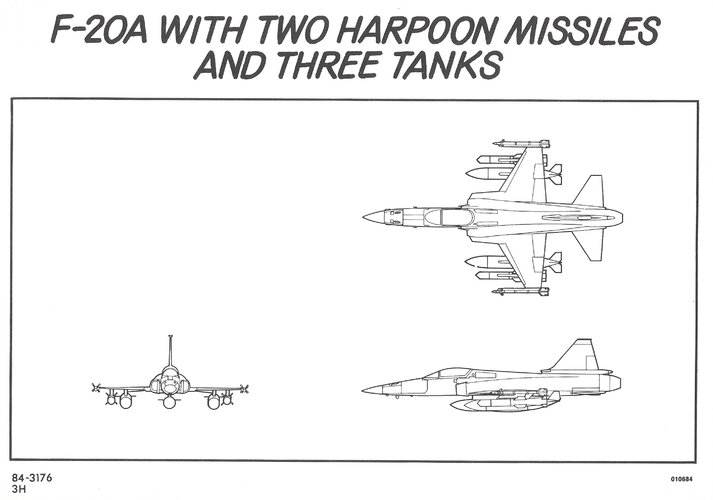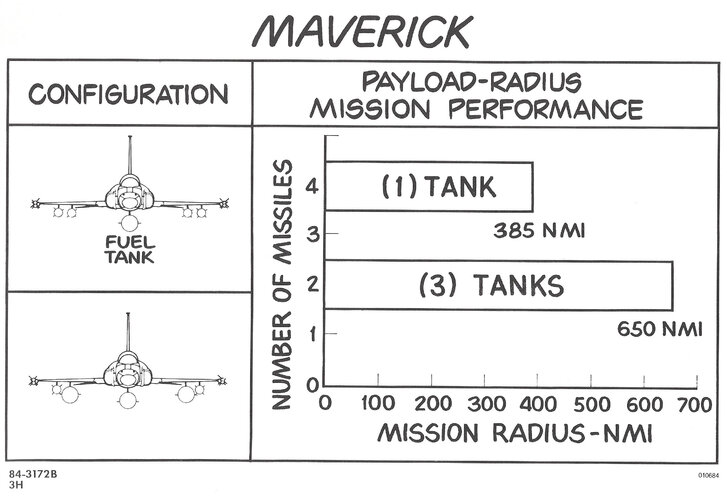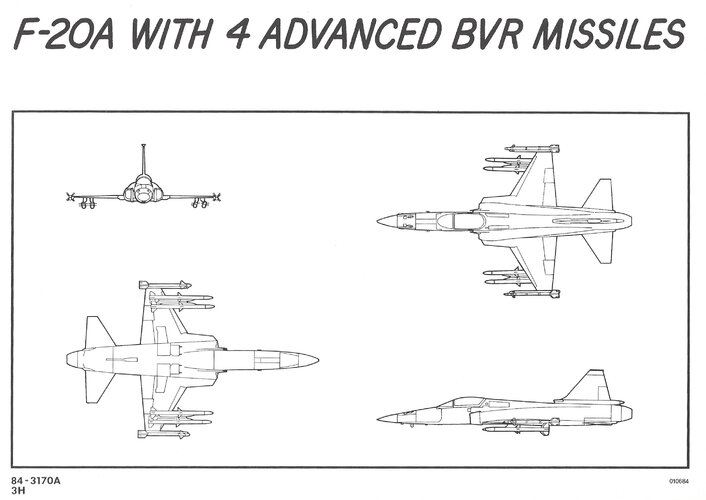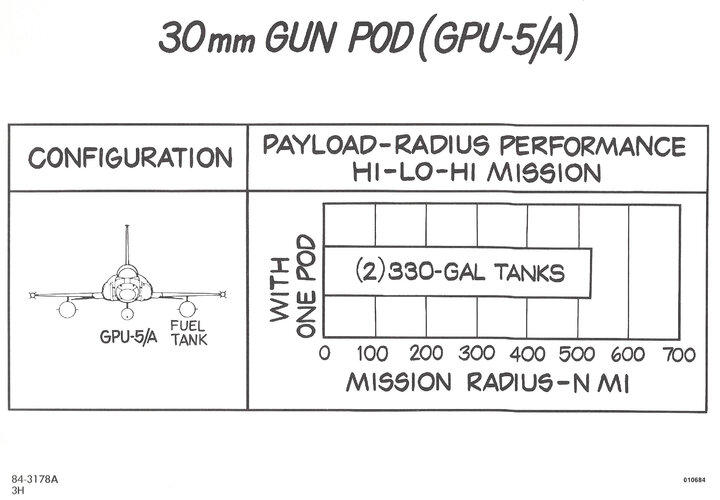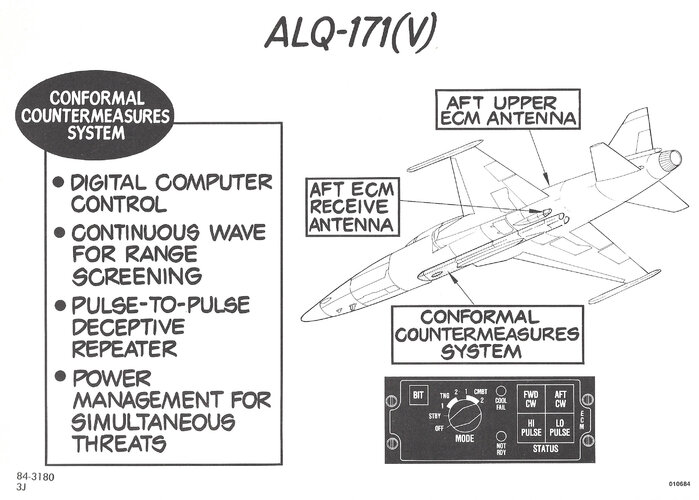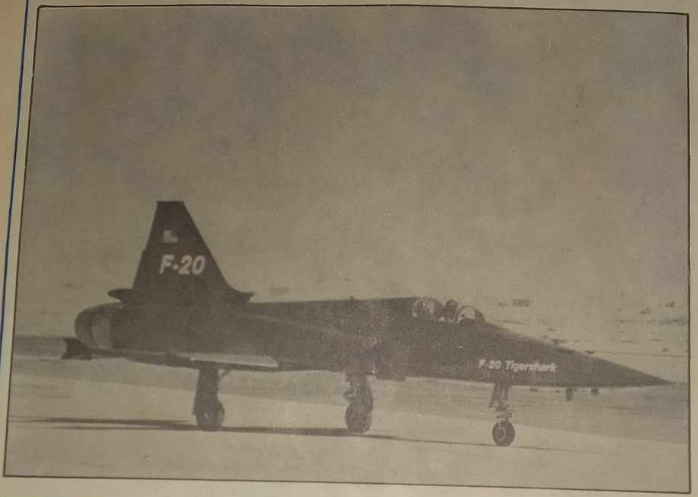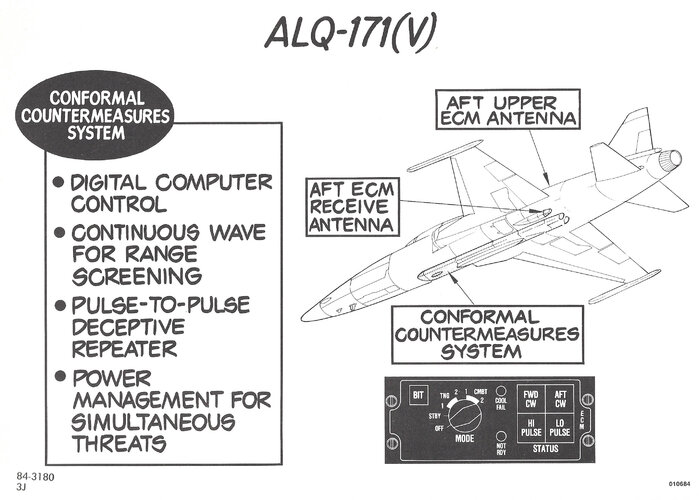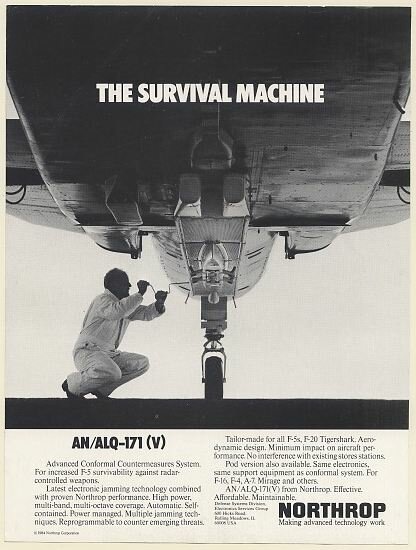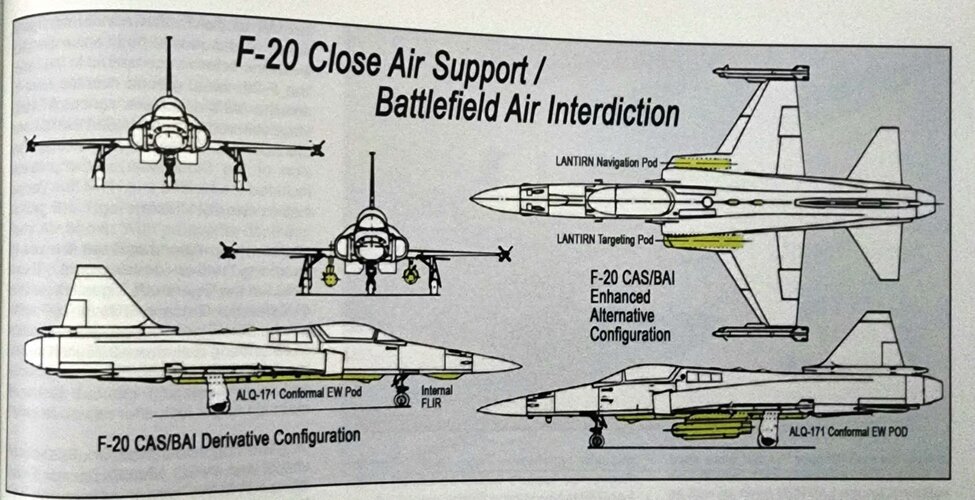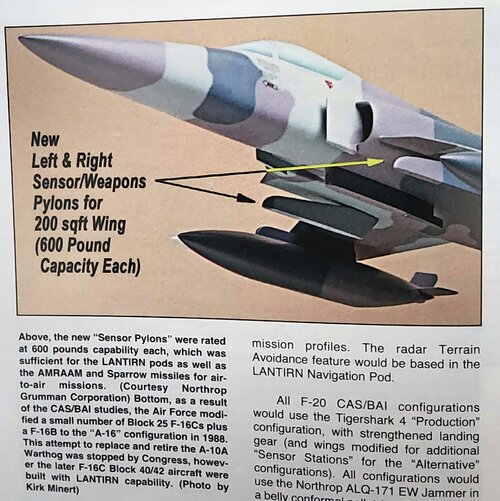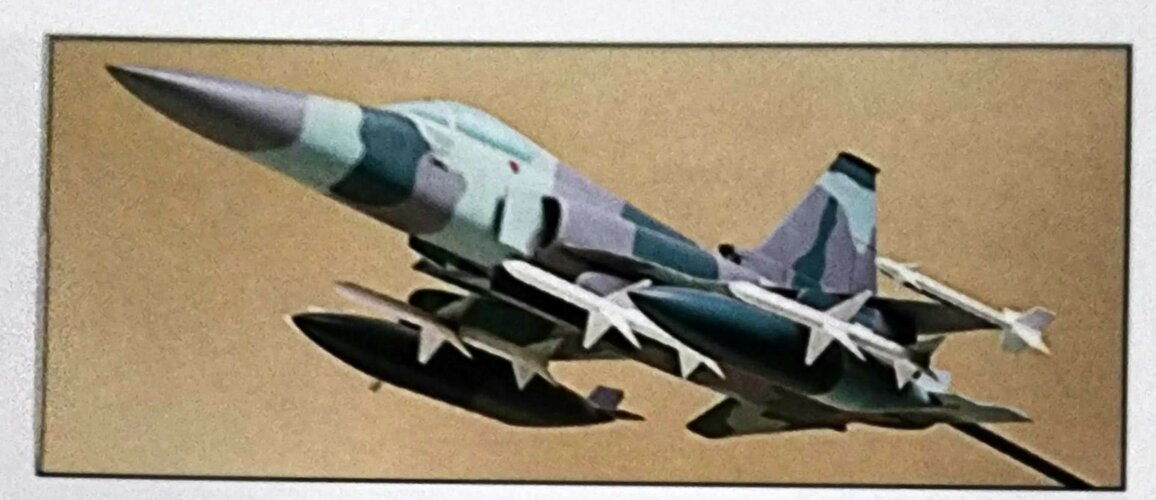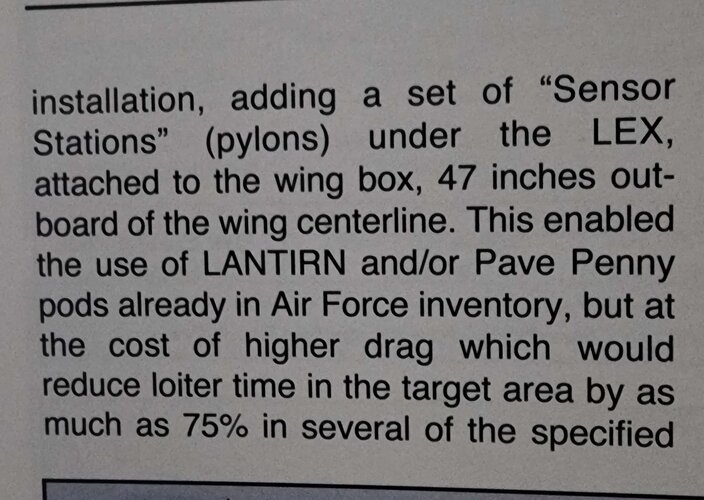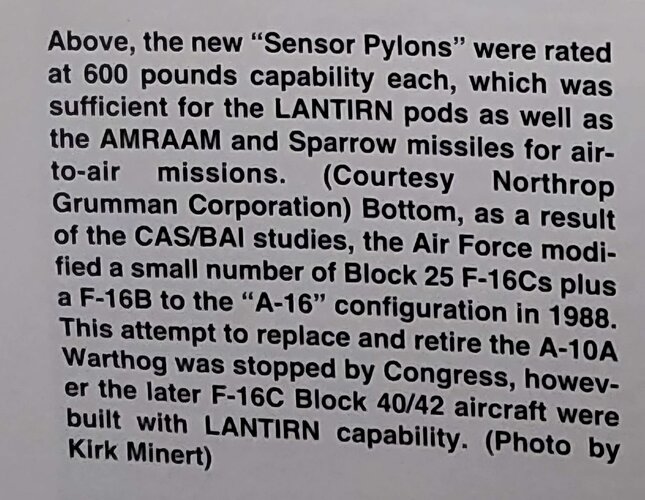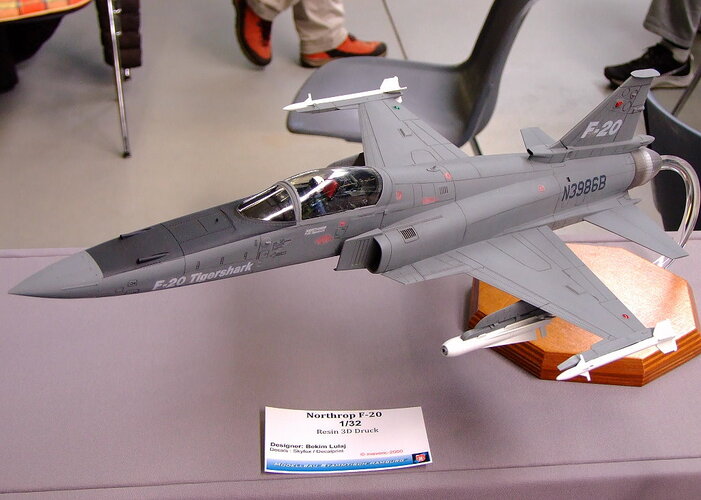Como se muestra en Northrop F-20 Tigershark de Paul Metz, el F-20 Tigershark fue concebido en la función de apoyo aéreo cercano/interdicción aérea en el campo de batalla (CAS/BAI) agregando un par de "pilones de sensores" o "estaciones de sensores" debajo del extensión de vanguardia (LEX). Cada uno de estos "pilones de sensores" o "estaciones de sensores" tenía una capacidad de 600 libras cada uno, lo que era suficiente para las cápsulas LANTIRN así como para los misiles aire-aire AIM-120 AMRAAM o AIM-7 Sparrow. Sin embargo, esto tendría el costo de una mayor resistencia, lo que reduciría el tiempo de merodeo en el área objetivo hasta en un 75%.
[ADJUNTAR=completo]722419[/ADJUNTAR]
[ADJUNTAR=completo]722420[/ADJUNTAR]
[ADJUNTAR=completo]722423[/ADJUNTAR]
[ADJUNTAR=completo]722421[/ADJUNTAR]
[ADJUNTAR=completo]722422[/ADJUNTAR]
FUENTE: Metz, P. (2023). Northrop F-20 Tiburón tigre . Steve Ginter. Obtenido de *EDITAR para eliminar enlace*
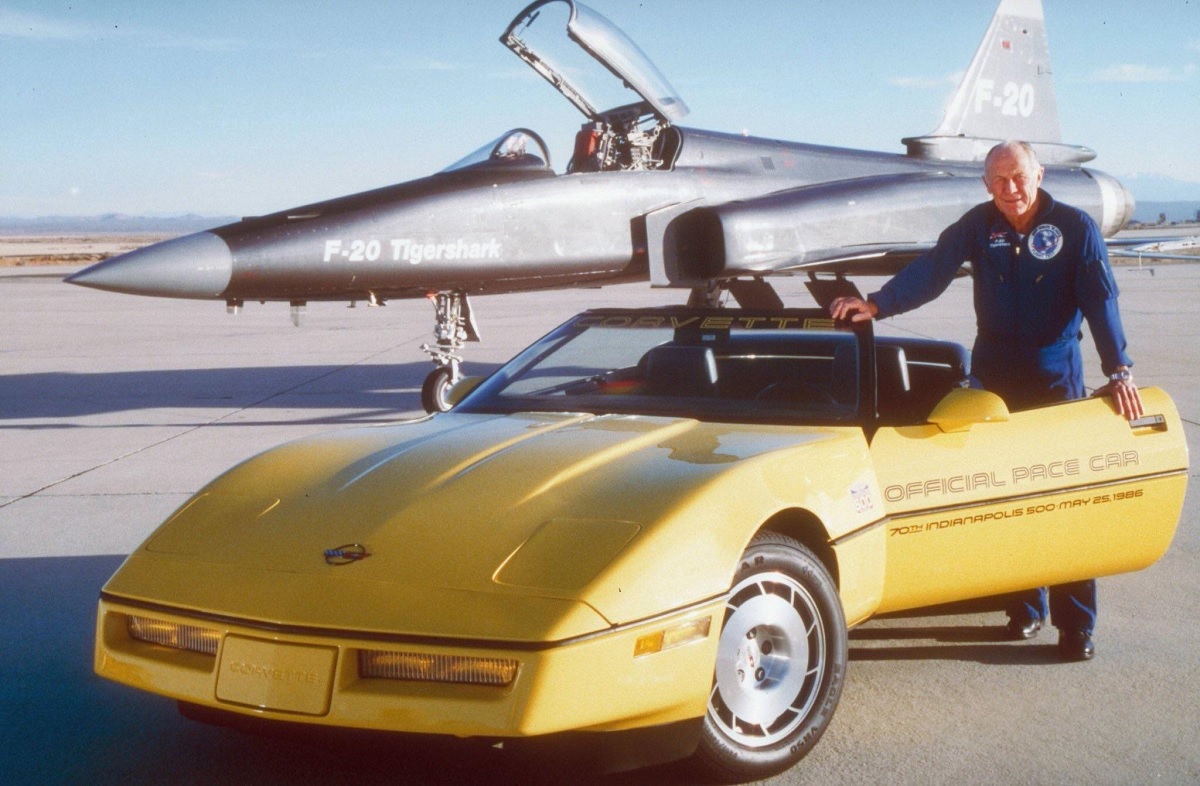
theaviationgeekclub.com

